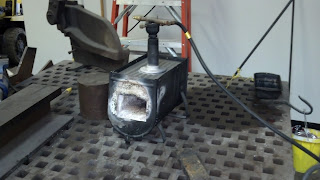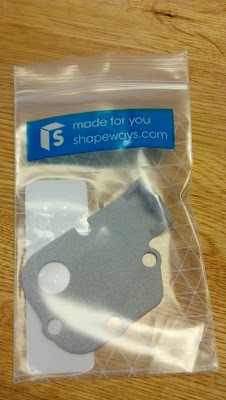A life goal of mine is to be able to understand how anything is made and/or know that I could make anything. Technology will always be advancing and I will never be an expert of any field, but it always appealed to me as something to strive for. That is why when I heard about a company called the Tech Shop I was instantly intrigued. In Tech Shop there is all the equipment to build most anything that anyone could want. Their slogan is "Build Your Dreams Here". It has its origins in Menlo Park, CA. No sites were located anywhere close. I checked back every couple of years and they were expanding. Eventually, I heard about a Tech Shop that was to open soon in Durham, NC; close enough to check it out. I was surprised that I never heard anything else about it aside from that singular article.
Finally, a few months ago, I checked again and found out it was open, and had been open for a few years. As I later found out, the confusion was likely that the shop in Durham was originally opened with a deal made with the primary location. The owner could open his own business and use the Tech Shop branding, but it would operate as its wholly separate entity. More recently, the original Tech Shop owners took more of an interest in the Durham location. They provided additional funding for extra equipment and now the Durham location is fully a part of the original Tech Shop family.
That bit of history is not part of the regular tour, but rather an added tidbit from my inquiries. In addition to having the equipment, they also have classes to train people to learn to use the equipment safely and also others to just learn how to do something new. I found one I was interested in and signed up. Now I had my motivation for going and prepared for a tour; camera in hand.
This facility is tucked in an industrial park. The building is not showy aside from a few decorations out front.
Got my pass. Officially ready for the tour.
The first area is for laser etching. The machine above is the etcher. This is directly across from the reception desk. There is a large window that people waiting in the lobby can ogle through to watch while others work.
Here is my tour guide showing me the equipment in the wood working area.
This room is dedicated to a large CNC (Computer Numerical Control) router. This one is for softer materials in general.
Work stations are set up in rows for individuals or groups to plan out their creations.
This is MakerBot. I believe it is the second generation, aka Replicator. The MakerBot is a personal 3D printer. It prints a plastic material (same material that is used for LEGO's) in layers to form any design. The goal is to package the industrial CNC machines into a product that is accessible to individuals. The equivalent would be the invention of inkjet printers so people would not need a press to make professional documents.
This is the 1st generation of the MakerBot. As an example of what can be made, I was shown this crustacean creature that was printed. All joints snap together and pivot.
This neat contraption was also printed.
Here is an industrial CNC machine for metal parts. We only passed through because there was currently a class going on showing everyone how to use the equipment.
This is an overview of the machine shop. The CNC router is where all the people are standing at the far end.
There is plenty of welding equipment and a perfectly flat and level table to work on.
This is a plasma table. It can cut through 1/2" thick steel. The picture below shows the remnants from where a gear was cut out. I had a little one-up-manship here. A plasma table was the first thing I ever designed. Mine could could through 3/4" thick armor plating and would support sheets of 8' x 24'.
I enjoyed this part. To be able to "Build Your Dreams" you have to have everything. This area, inside a place called the Tech Shop is as un-tech as anything. Heat your metal in the furnace shown above then forge it into any shape that desired using the anvil and tools shown below.
Then there is also a small area for castings.
That was everything for the first floor. On the second floor the first stop was a room dedicated to screening processes. Everything to make your own t-shirt logo.
This creepy room is an empty office. People can rent a room like this to store their work or anything else. Some of the other large areas upstairs are for training rooms and there is also a decent kitchenette.
All of the doors and drawers of the kitchenette were made on the equipment in the wood shop.
An area dedicated for sewing
The electronics work stations.
The tour concluded back at the main lobby. The desk is littered with different items that had all been made in their facility. It ended in perfect time too. My class was just about to start.
This is the classroom. The session was not on Autodesk, but people can come here to use the software or have a class on it.
My degree is in mechanical engineering. To be able to build much today there almost has to be electronics involved. I have had some introduction to it, but it has been a long time. The session I signed up for discussed the Arduino electronics board, did some basic prototype wiring and programming. When programming, the first program most people learn is called Hello World. All it will do is bring up a window and display the text "Hello World". In electronics, the Hello World equivalent is to turn an LED on and off. That was where it started. The conclusion was something I had never done before. The board was actually interfaced to the computer during operations and the brightness of the LED was dictated by the position of mouse in a window.









































